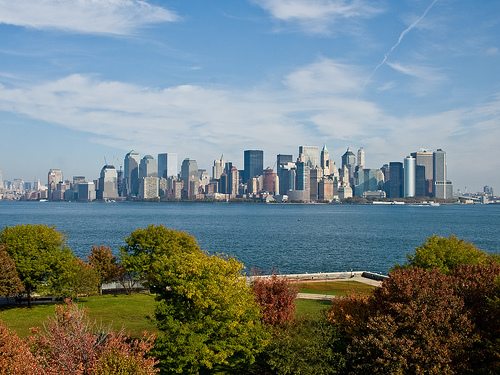

Environment
Sea levels near New York ‘jumped’ by 4 inches in 2 years
Sea levels from New York to Newfoundland increased by four inches between 2009 and 2010 because ocean circulation changed, according to a new study. The findings suggest that extreme sea level rise events could occur more frequently if greenhouse gas emissions continue to rise.
The study, which was led by the University of Arizona and funded by National Oceanic and Atmospheric Administration (NOAA), has been published in Nature Communications.
One of the authors of the report, Paul Goddard, from the university, explains that the length of time is what stands out in this event. The research is the first to document extreme increase in sea level lasting more than a few months. The paper links the “unusual spike in sea level”, which caused flooding along the northeast coast of North America, to changes in ocean circulation.
The researchers detected the two-year-long spike by reviewing monthly tide-gauge records, some of which went back to the early 1900s, for the entire Eastern Seaboard. No other two-year period showed such an increase. The change has been linked to a change in the ocean’s Atlantic Meridional Overturning Circulation (AMOC) and also a change in part of the climate system know as the North Atlantic Oscillation.
Using climate models the team found that it is likely that such events will become more frequent in the future if the current rate of atmospheric carbon dioxide continues to increase.
Co-author Jianjun Yin, an assistant professor of geosciences at the University of Arizona, explained that the AMOC brings warm water from the tropics and the southern Atlantic Ocean to the North Atlantic and polar regions. The water then cools and sinks, eventually flowing south in the deep ocean. Yin’s climate model predicated that when the AMOC is weakened sea levels in north-eastern North America would rise.
He added that at the current rate of increase in greenhouse gases, most climate models predict a weakening of the AMOC over this century. Therefore such extreme sea levels rise events and coastal flooding are quite likely to occur along the densely populated coast more often.
Photo: William Warby via Flickr
Further reading:
Study: sea levels rising quicker than previously estimated
Greenland ice melt and sea level rise ‘greatly underestimated’
Antarctic winds could accelerate sea level rise
Sea levels to rise by 1.8 meters in worst-case climate scenario


 Features9 months ago
Features9 months agoWhat is the Eco-Friendliest Option to Wash Your Dishes?

 Environment12 months ago
Environment12 months agoBuilding a Career in Green Construction: Tips and Insights

 News11 months ago
News11 months ago5 Ways Fleet Maintenance Software Can Help Businesses Be More Eco-Friendly

 Features10 months ago
Features10 months agoAddressing Pressing Ethical Concerns with Crypto Exchanges






























